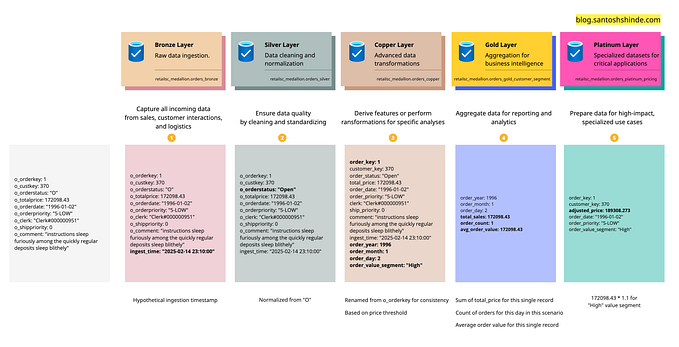The dire state of cloud-first strategies in NHS Trusts in 2020
In April 2019, Kettering General Hospital (KGH) commenced on an ambitious journey to be the most digital hospital in England by July 2023. One component of this journey is the aim to decommission all on-site data centres, and move to the cloud, particularly in the light of our forthcoming rebuild as part of the HIP2 programme in the next 3–5 years. Achieving this move is a multi-year project, so putting steps in place to achieve this now is critical.
As we begin to formulate the cloud-first policy/strategy for KGH, I wanted to see what others in the NHS were doing. Over the course of a few hours over a weekend I attempted to summarise the state of play across the NHS, based on publically available documents and my patience with the number of Google results I was willing to click through. The picture is not good.

Why Public Cloud?
There are plenty of articles and arguments available of why moving to the cloud makes sense, along with the Secretary of State for Health and Social Care’s Tech Vision¹ and the the National guidance from NHS Digital². For me, there’s an even simpler driver — my view is that in 10 years time there will be very few people around who are sufficiently skilled to maintain an on-premise data centre at the performance and security levels required with pay demands that are affordable to a normal NHS Trust. Following a similar logic, I also see that there will be very limited private cloud providers, so our approach will be to focus on the public cloud.
Who is doing this in Provider Land?
Given that KGH is an acute provider, this research is focused primarily on the provider side. The focus was on finding Trusts who had a cloud-first strategy in place with similar wholescale ambitions, rather than those who are using piecemeal pieces of Software as a Service (SaaS), or things like Office 365. I was looking for numerous examples of Trusts who had decommissioned whole chunks of their data centres, and if I was lucky, I hoped see some who had moved their Patient Administration System (PAS) into the cloud.
Starting with GDEs is a good move right?
Wrong. A Google search for all Acute GDEs and Fast Followers (that’s 32 Trusts) did not yield any results for a cloud strategy (see notes on the methodology below).

The best I could find was a few vague comments:
- Alder Hey Children’s Hospital NHS Trust: “Cloud technologies will be reviewed and where appropriate will form part of the overall data centre strategy”
- Gateshead Health NHS Foundation Trust: “The Trust is assessing the option of utilising cloud based services as part of its options appraisal process for each Informatics programme and project”
- Milton Keynes University Hospital NHS Foundation Trust: “The Trust has started to invest in cloud based infrastructure and will look to extend this where needed to meet user requirements. This will allow the Trust to make an informed decision as to whether to solutions should be locally or cloud based.”
So far, so frustrating, but perhaps even more alarming was the absence of a published Digital Strategy for most of these. How can that even be right when we’ve spent something like £300m³ on these initiatives?
What about anyone else?
A more general Google search for NHS Trust Cloud Strategy did not yield anything much more helpful:
- Sherwood Forest NHS Trust: Digital Strategy 2020–2025 only mentions cloud in passing “an anticipated move towards a cloud-first strategy”
- York Teaching Hospitals: Digital Strategy 2017–2022 “appropriate Cloud alternatives will also be reviewed”
- Barts Health NHS Trust: Article obviously from a Capgemini Press Release “The three-year agreement will see Capgemini work across all five hospitals in the Trust, rolling out end-to-end cloud services across sites in Central and East London”. But a search on the Barts website reveals nothing in terms of a strategy or policy document.
It would seem that an intrepid person called Kyle Preston made FOI requests to pretty much all Trusts during 2018 and into early 2019, asking if they had a Digital Strategy and plans to move to the cloud, among other things. I’ve not managed to find the summary of this research, other than find a nice map of the requests. I searched the WhatDoTheyKnow site for Kyle’s requests and although didn’t get through every one, there was a disappointing number of negative responses for Digital Strategy documents let alone a positive answer to cloud migration plans.
Conclusions and Final Thoughts
- The NHS is terrible at sharing, and that makes me sad. If the purpose of the GDE programme is to exemplify good practice and share it with the rest of the NHS then it is failing at the very basic level of Making Things Open [#9 of the NHS Service Manual Principles] and sharing Digital Strategies. Perhaps it is just the way I formulated the Google search or their individual Trust websites that don’t index the content? I’d love for someone to prove me wrong, but even if this is the case, I’d argue that for £300M, the folks running the GDE Programme ought to make it mandatory for each GDE and Fast follower to have a published Digital Strategy. The next step would be for them to have a published statement, updated every 6 months on progress against the Tech Vision¹. [Just so we have our own house in order — the KGH Digital Roadmap and Health Intelligence Strategy are here under “Our Supporting Strategies”.]
- The Tech Vision is one of best examples of a sensible policy document we’ve seen in a long time, but it would appear no Trusts are working towards achieving the cloud-related aspects. Why is that? There’s certainly the challenge of moving spend from lumpy capital to annual revenue subscriptions, but it can’t be simply that? Is it about someone needing to go first? That was the point of the GDEs and Fast Followers, so that hasn’t worked. Hasn’t the risk/benefit calculations swung far enough to cloud yet? Perhaps it is simply a case of needing to address years of under-valued and under-funded infrastructure before moving to the cloud is considered?
This research hasn’t dented my ambition for KGH to move to the cloud, but there’s clearly more way-finding to do in this murky landscape. Maybe just someone needs to be bold?
[First written August 2020]
Update Oct 2020: We have now published our short and simple cloud-first policy (see under Our Supporting Strategies).

Notes
¹ NHS Policy Paper: The future of healthcare: our vision for digital, data and technology in health and care
² NHS Digital: NHS and social care data: off-shoring and the use of public cloud services
³ NHS Digital 2018–19 Annual Accounts and Report states “with £200 million
funding announced by the Secretary of State in September 2018”. So an estimate of £300m for the programme to date would be fairly conservative.
Methodology
- Using the Google search in the format [Full Trust name]+”cloud strategy”. If that yielded no results, then searched in the format [Full Trust name]+”digital strategy”, followed by [Full Trust name]+”digital roadmap”
- Then did a bit of digging round in any sections on the Trust website that were related to digital strategy.
- Then a look at the overall Trust strategy. I’m very fond of repeating a phrase I heard a while back (which I think is attributable to Bud Caddell) “There’s no such thing as a Digital Strategy, just a strategy in a Digital World”, so if I could find it, I also opened the Trust strategy and searched for Digital and Cloud.








